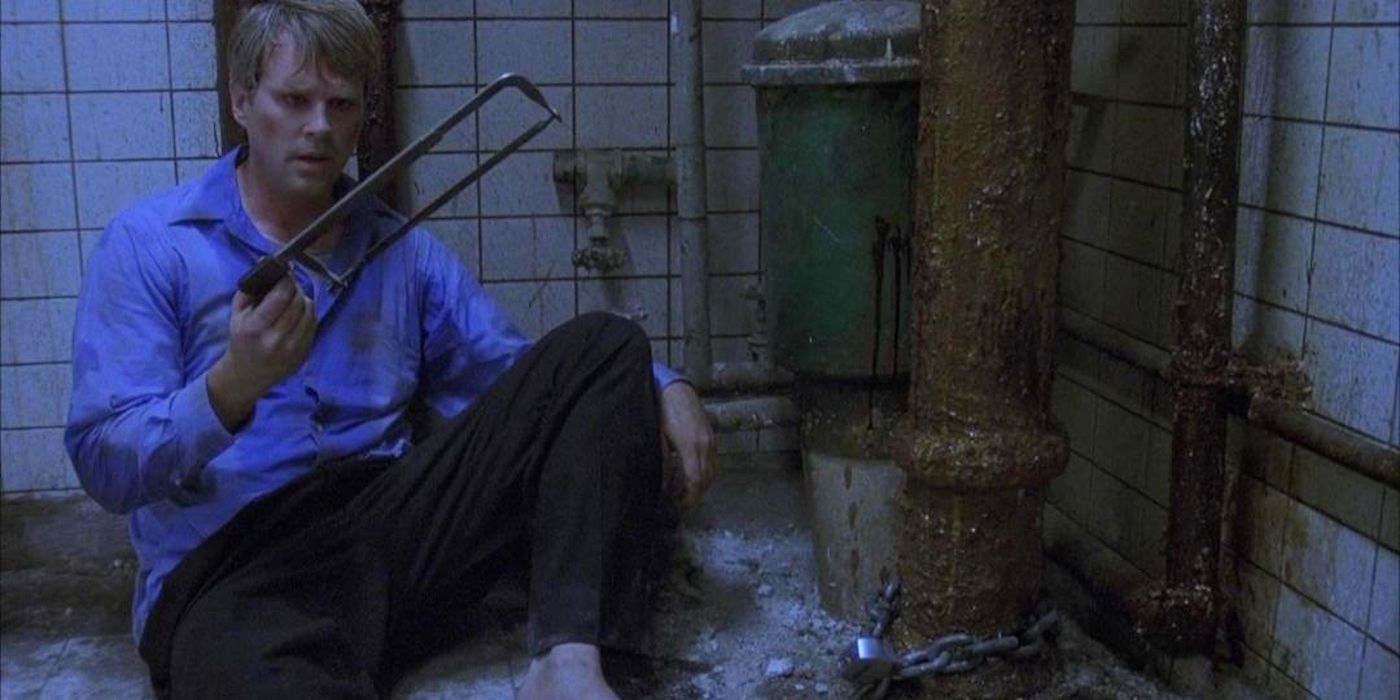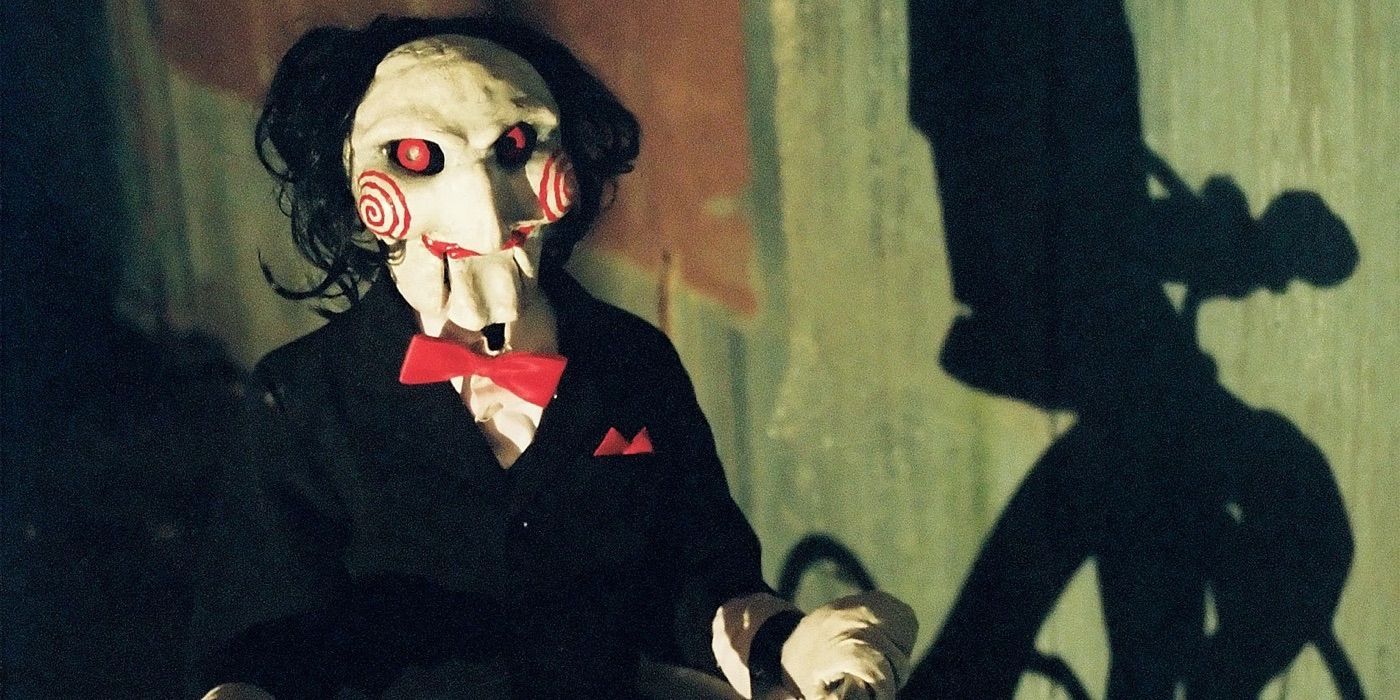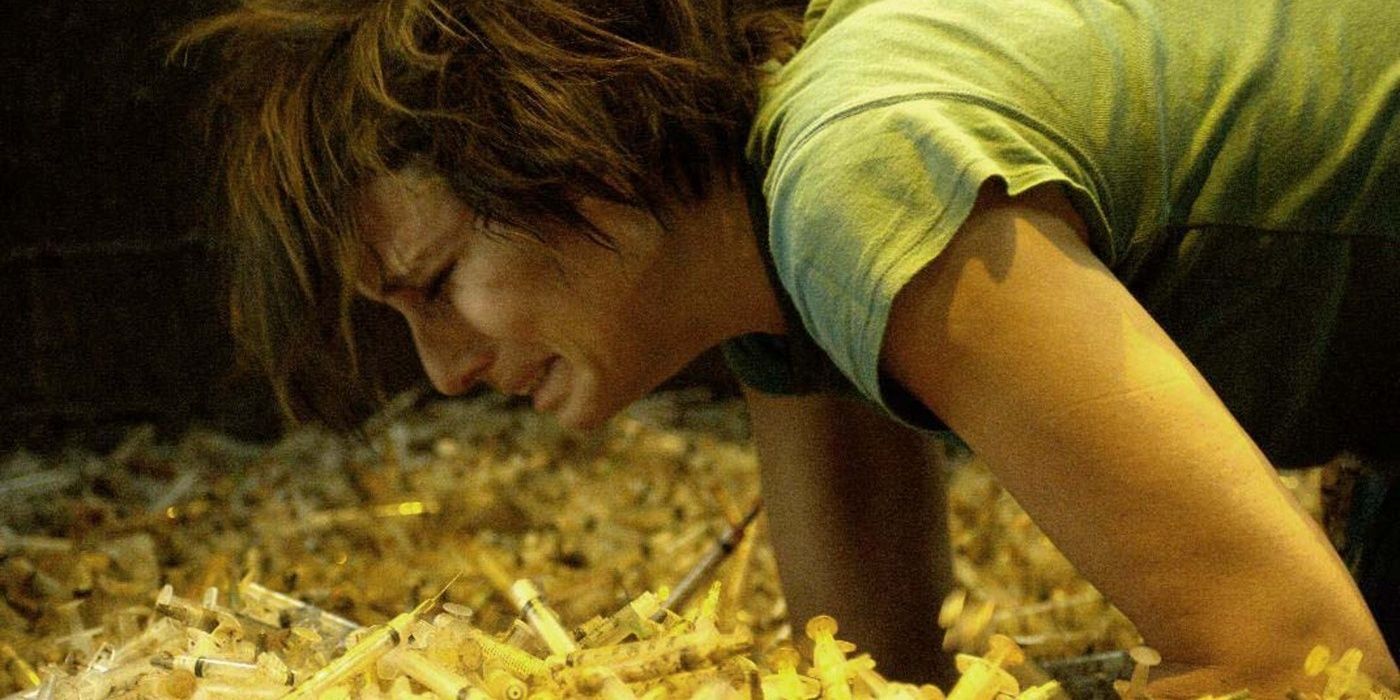The biggest horror franchise of the 2000s has to be Saw. Created by James Wan and Leigh Whannell, it all started as a short film in 2003 and was made into a small horror film in 2004, that actually isn't nearly as gory and gross as most of its sequels. The tone of the franchise, at least many of the early ones, is gritty and grimy. They have very unclean settings and unclean characters. While it may have not been the first film of that era to have this tone and vibe, it's certainly the most popular. With horror tropes and trends being very heavily tied to social climates and societal fears of the time, it's interesting to look at what the early 2000s was like and what could have caused influence.
The main Saw series consists of eight films spanning from 2004-2017. A new piece of the franchise, Spiral: From the Book of Saw is set to release May 14, 2021 and another edition to the original series was announced to be in development in April of 2021 though no information is known about it. The series revolves around a killer named "The Jigsaw Killer". He is some kind of dark vigilante, who puts people he believes have messed up their life and puts them in elaborate deadly traps. If they escape, they get a second chance at living their life the right way. This results in a lot of blood and gore, and some very creative on-screen deaths.
The story of Saw unfolds in pieces, in sort of a non-linear way. It's known for having tons of twists throughout the series, often played out very dramatically in the last 10 minutes. All of this relates to the jigsaw puzzle theme, as the films are almost a game themselves. It's neat, and its elaborate plot has both been praised for being interesting and criticized for being far fetched. But what is the real fear behind the series? The core of the story revolves around a few things. Firstly, its grimy, raw, and gross tone. Secondly, the fear of real human threats and beings as opposed to supernatural forces. And lastly, the idea of paying for your sins in a torturous way.
Media and art in general, but horror film trends specifically, can almost always be tied to a historical event or societal issue. The single defining moment of not only America but the world in the early 2000s, the era of the original Saw series, was the 9/11 attack on the World Trade Centre in New York City. Going into detail about the attacks is absolutely not necessary as it's pretty much public knowledge at this point, but the event really did change how the world functioned. It also induced a lot of real, visceral fear.
The public was very scared of subsequent terrorist attacks, and more than ever it felt like no one could truly be trusted. It was a weird era to be alive, as it felt like the whole world changed overnight. Some horror and film experts believe that, though maybe not explicitly so, the fear of other people created by 9/11 is what set the tone for the themes of films like Saw in that era. The series lacks any supernatural elements whatsoever, all of the villains are everyday people who have chosen to hurt others. And in a way, the games depicted in the series are comparable to terrorist attacks.
Though the scenes are nothing like what happened in 9/11 or in the majority of terrorist attacks in the news, multiple people are kidnapped and tortured. It's certainly an attack that induces terror. If the series were set in another country, it wouldn't be too absurd for the general opinion to be that Jigsaw and his colleagues are some sort of terrorist organization. Because this is set in America though, and the villain is an older, white man, that's not an analysis that gets publicized too often. Because this was such a reality of the time, it makes sense for these to have such a grimy and raw tone like they do.
The other huge historical event that came of 9/11 was the Iraq War. This was a massive event that lasted almost the entirety of the 2000s and was highly controversial. It began in 2003, a year before the first Saw came out. The Iraq War is often characterized by the torture and war crimes committed toward the beginning of it. America was originally thought by most of the Western world to be the good guys in this situation, as it was to be a retaliation for the terrorism committed on 9/11. The torture seen in Saw, and the theme of paying for sins in a torturous way, mimics these kinds of themes a lot.
Though the ties between Saw and these historical events have never been confirmed or said explicitly, it's more to do with the implicit tone of the times. These were societal fears of the era, and they had an influence. The 2000s is also not the first era that this happened in, it can be seen in almost every era since films were a thing. With Spiral: From the Book of Saw being released in an era with totally different tones and societal fears, it begs a question of what its themes might be.
Considering the current political climate, an obvious direction could be political unrest and police brutality. Featuring Chris Rock and Samuel L. Jackson in prominent roles could also be alluding to a racism element to the story, however it's unfair to assume that would be the case simply because they are Black actors. The story surrounding Spiral: From the Book of Saw has actually been very tight-lipped and secretive, so no one knows just yet, and it could simply just end up continuing with the themes of the original series. Fans of the series are certainly very excited to find out.
Spiral: From the Book of Saw is opening in theatres where open on May 14, 2021.



